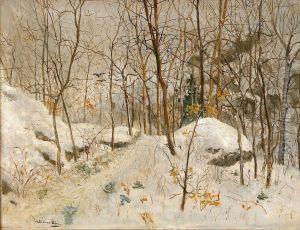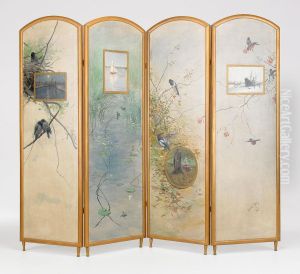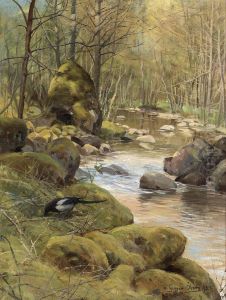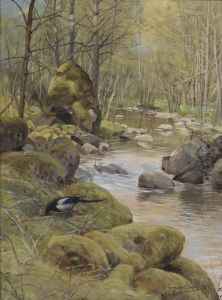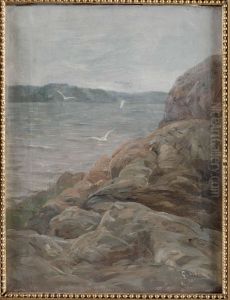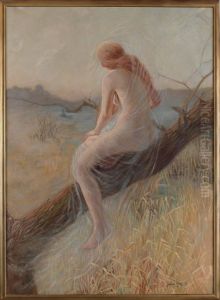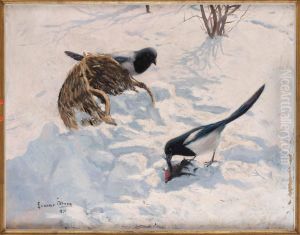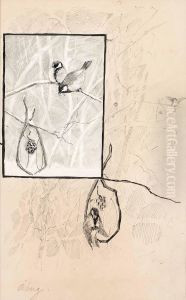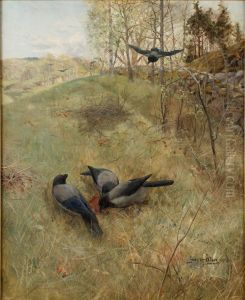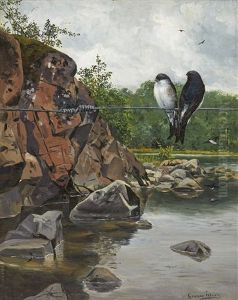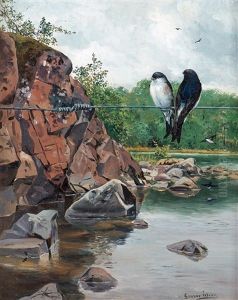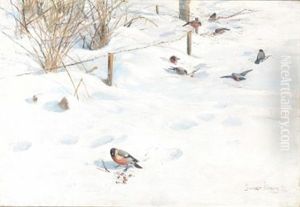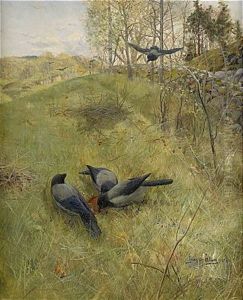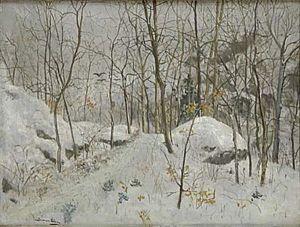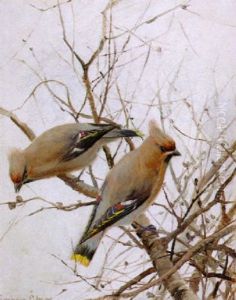Gunnar Aberg Paintings
Gunnar Åberg was a Swedish painter and printmaker born on July 12, 1886, in Karlskrona, Sweden. He is primarily known for his landscape paintings, which often feature the Swedish countryside and are characterized by their naturalistic style and serene atmosphere.
Åberg's formative years were spent receiving his art education in Sweden. He studied at the Royal Swedish Academy of Fine Arts in Stockholm from 1906 to 1911, where he honed his skills in painting and developed a deep appreciation for the Swedish landscape that would become the central subject of his artistic oeuvre.
After completing his studies, Åberg spent a substantial amount of time traveling throughout Europe. His travels took him to countries like France and Italy, where he was exposed to various artistic styles and movements that were prevalent in the early 20th century. Despite these influences, Åberg's work remained deeply rooted in the tradition of Swedish landscape painting.
Throughout the 1910s and 1920s, Åberg developed a reputation as a skilled landscape painter, and his works were exhibited in numerous art galleries in Sweden. His paintings often depicted the serene and idyllic Swedish countryside, with an emphasis on the play of light and shadow. Åberg's landscapes are noted for their tranquility and his ability to capture the essence of the natural environment.
Gunnar Åberg was also involved in printmaking, and he created a number of lithographs and etchings that complemented his work as a painter. These prints, like his paintings, often featured landscapes and rural scenes, showcasing his versatility as an artist.
Åberg's career was relatively brief, as he passed away at the age of 60 on November 4, 1946, in Stockholm. Nevertheless, his contribution to Swedish art, particularly landscape painting, remains significant. His works continue to be appreciated for their beauty and serenity, and they are represented in various Swedish museums and private collections.
